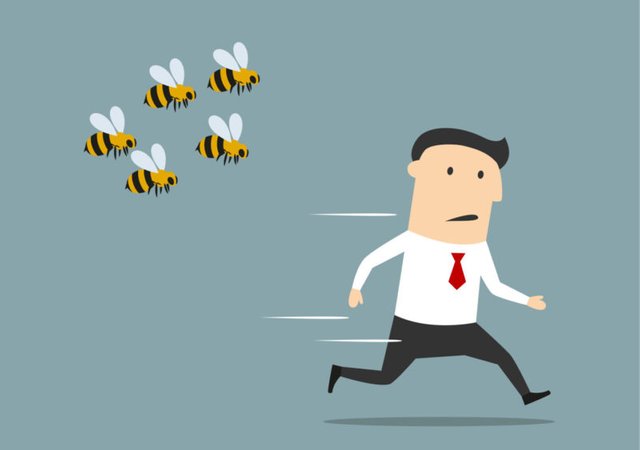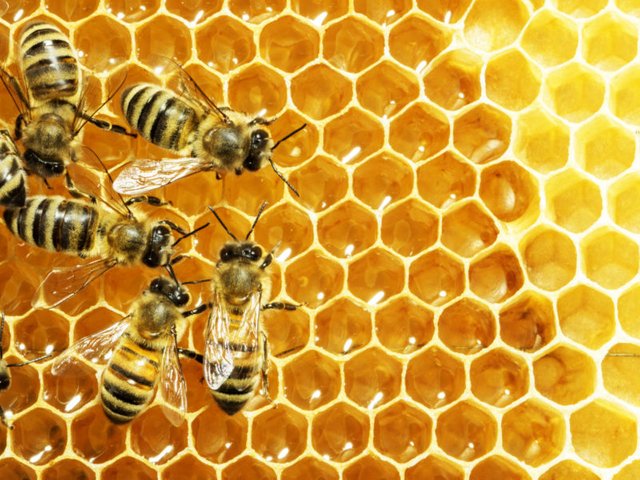If you were bitten by a bee ... It's important to know everyone!
To begin with, it should be noted that without a reason, the bee will not attack the person. She only fires in the most extreme case, and even then for her own protection. Therefore, the worst thing you can do when you meet a bee is to start waving your arms. So you just draw her attention to her and provoke a bite.
Why does the bee die after the bite? On the sting of the insect there are jags, which, when bitten, catch on to the soft skin, and the bee is unable to pull the sting. Making sharp jerks to free himself, the bee tears out a sting, and with it a part of the intestines, after which it dies.

Composition of bee venom
Bee venom has a complex chemical composition, it contains proteins, fats, carbohydrates, acids, the most important macro and microelements. But we will pay attention, first of all, to those substances that are potent toxins.
Melitin is the basic toxin of a poison that, when mixed with blood, can destroy red blood cells. Melitin causes inflammatory processes throughout the body and disrupts the normal functioning of the digestive system.
Apamin - affects the human nervous system, causing excitement in its various departments.
Histamine - causes pain, swelling, redness, a severe allergic reaction, which leads to a sharp drop in pressure.
Hyaluronidase is an enzyme that destroys mucopolysaccharides. Getting into the body, it promotes the rapid spread of edema.
Phospholipase A - strengthens the inflammatory process and damages the blood cells.
What to do when a bee stings?
Carefully (if you have tweezers at hand, then use it, pre-disinfected) remove the stinger without touching the sac with the poison (!). If you begin to squeeze out a stinger from the skin, then damage the pouch, and the poison will spread through the body more quickly.
Since bee venom has an acidic pH, it can be neutralized with an alkaline solution (eg soapy water).
After that it is necessary to disinfect the place of bite. Any antiseptic (hydrogen peroxide, iodine, zelenka, furatsilin solution, ammonia solution) is suitable.
In no case do not scratch the affected area, as this promotes the spread of poison to neighboring tissues and increases the risk of infection. To relieve pain and swelling, use a cold compress.
After treatment of the wound, drink an antihistamine, even if before you had no allergic reactions.
You can use ointments with antihistamine effect, they will help to remove symptoms.
Drink as much liquid as possible until the edema is asleep. Refuse to drink alcohol, it will only lead to increased edema

Allergy to a bee sting
An allergic reaction to the bite of bees develops as a result of an increased reaction of the human immune system to any of the components of the bee venom.
Elmira Dzybova, dermatooncologist, allergologist-immunologist:
- If after a sting of a bee you notice the development of an allergic reaction, the most important thing is to determine the severity of this allergic reaction and its danger to health.
If the bee stings you in the limb or trunk region and a blister develops in the area of the bite, redness, itching, but in general you feel good, it will be enough to drink antihistamine and lubricate the bite site with special gels after an insect bite or corticosteroid cream. In most cases, after a few hours the reaction either passes completely, or becomes less pronounced.
However, if a bee bites you in the face, lip, eyelid or oral mucosa, there is a high risk of developing life-threatening allergic reactions - Quincke edema, respiratory or vision disturbances.
Therefore, if you feel the development of a pronounced allergic reaction, a general disorder or weakness, you need to call an ambulance team, and immediately take an antihistamine!
it's a very good article about bees! well done @aurica72!